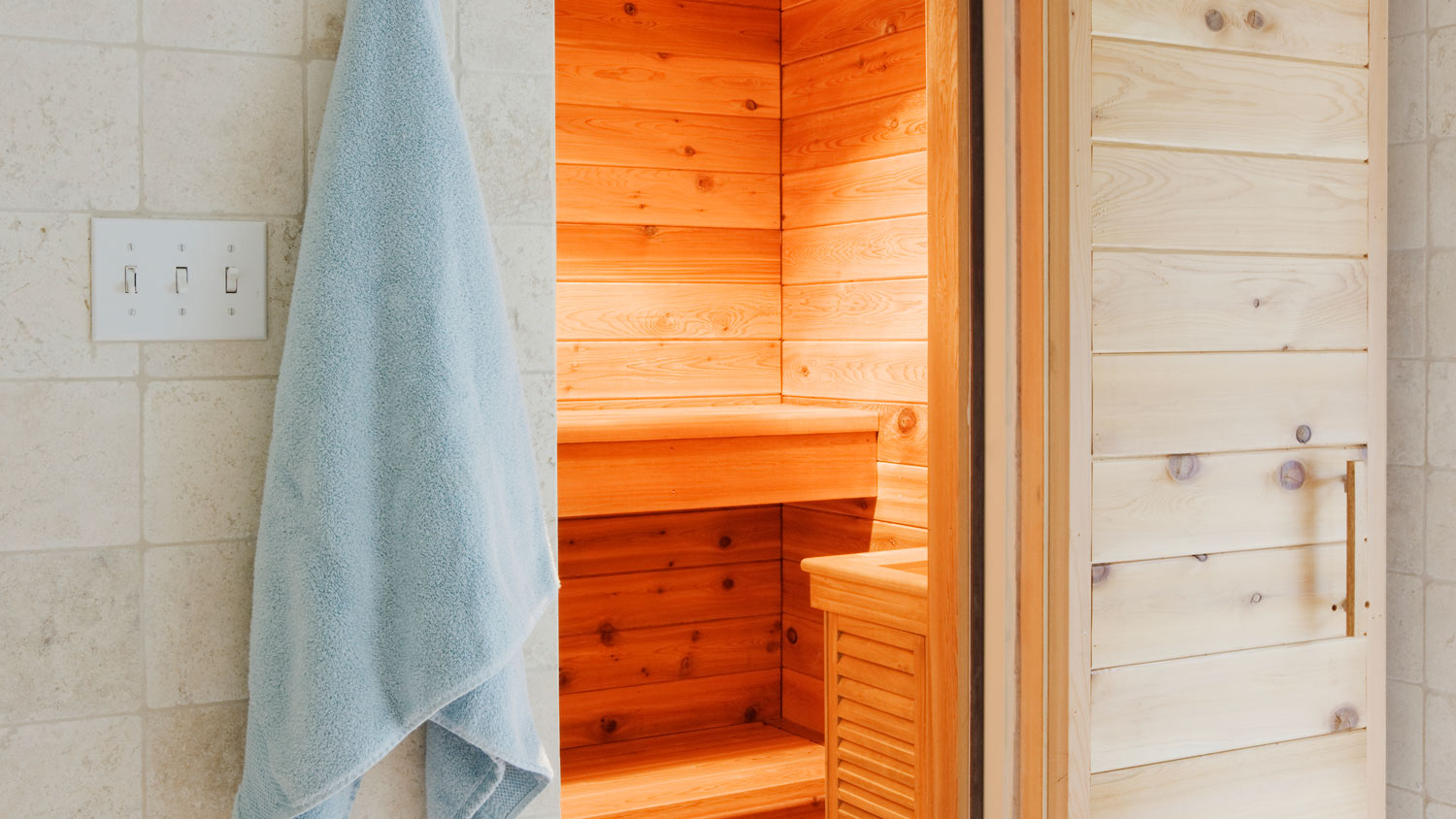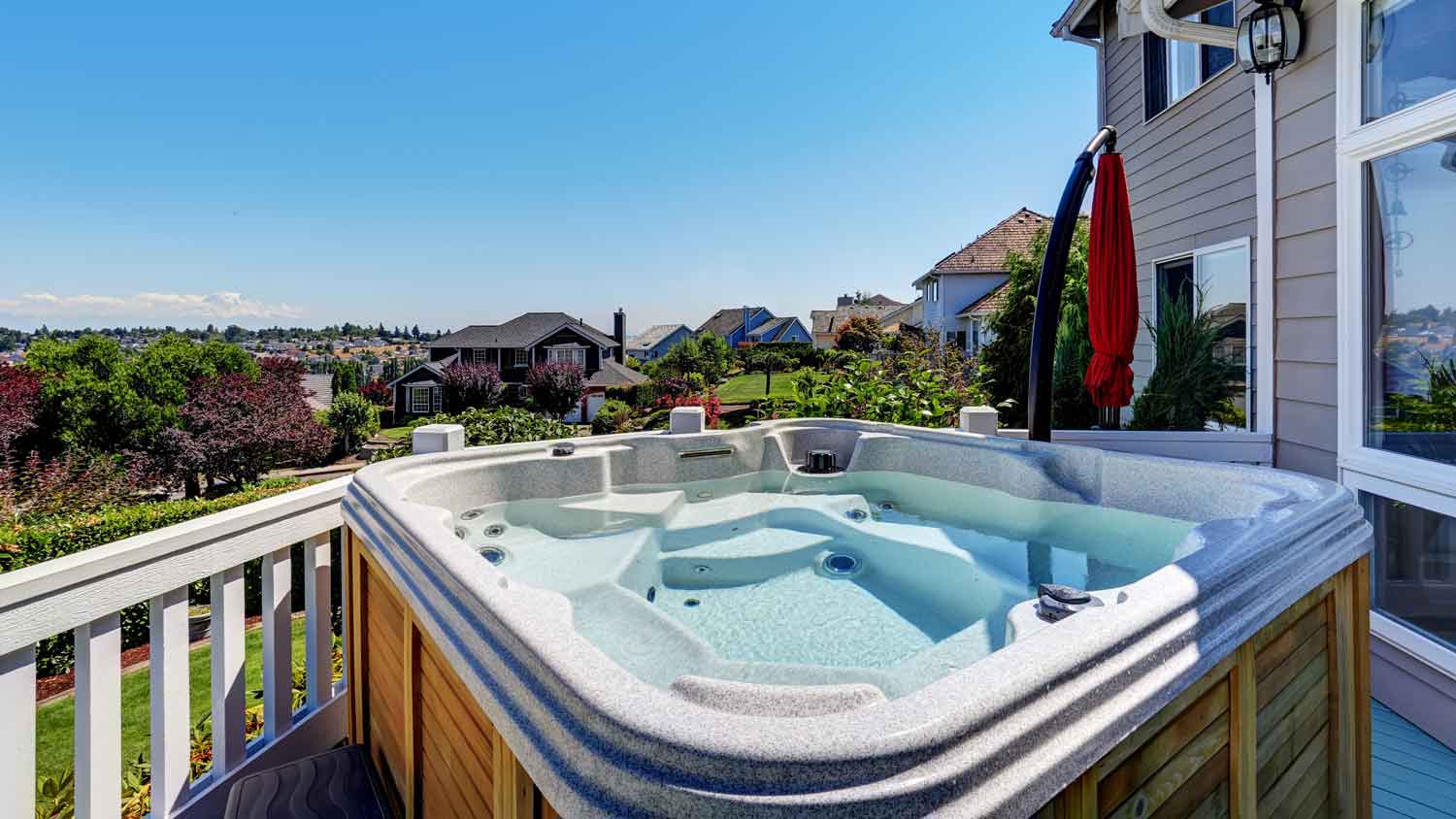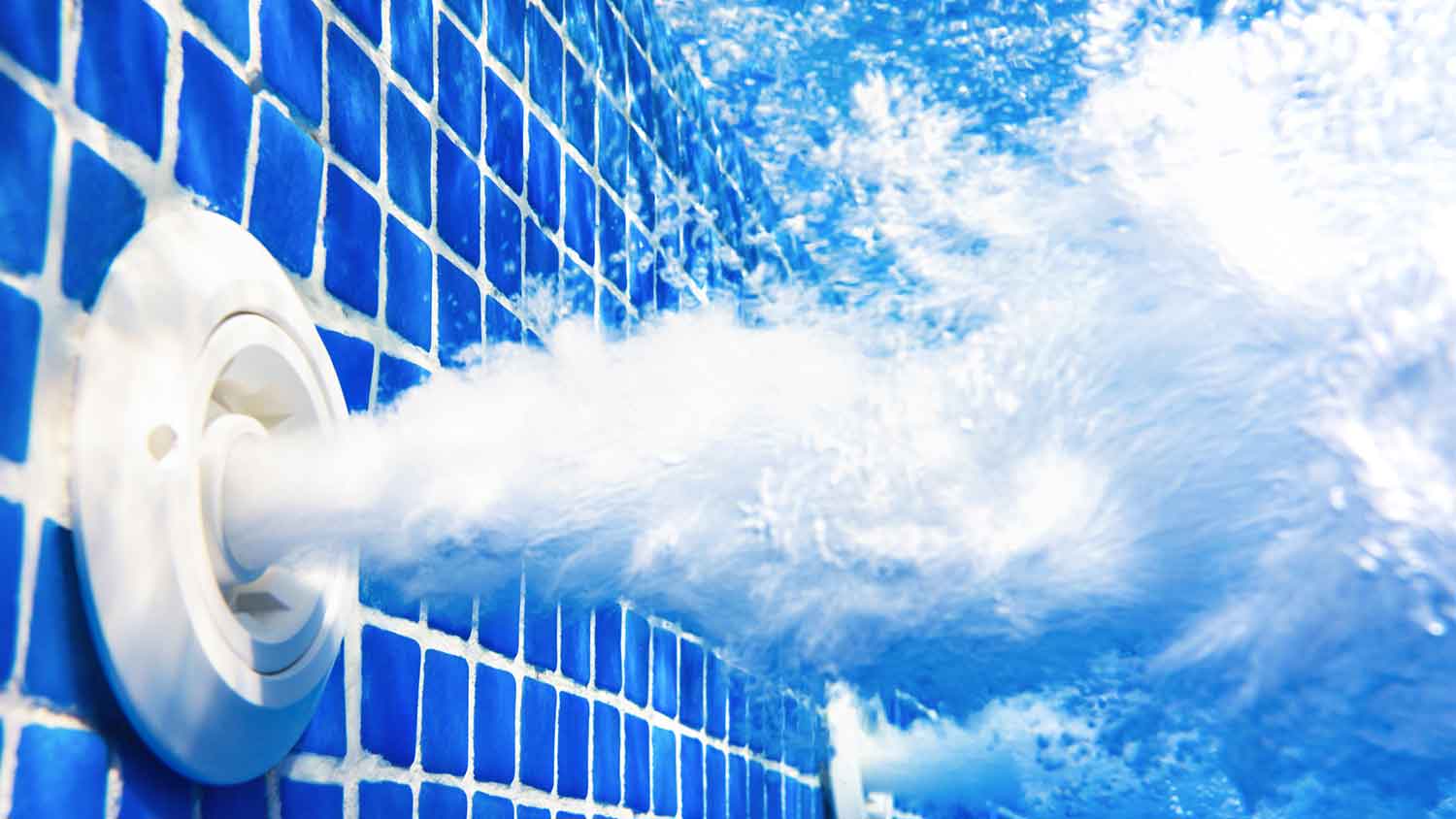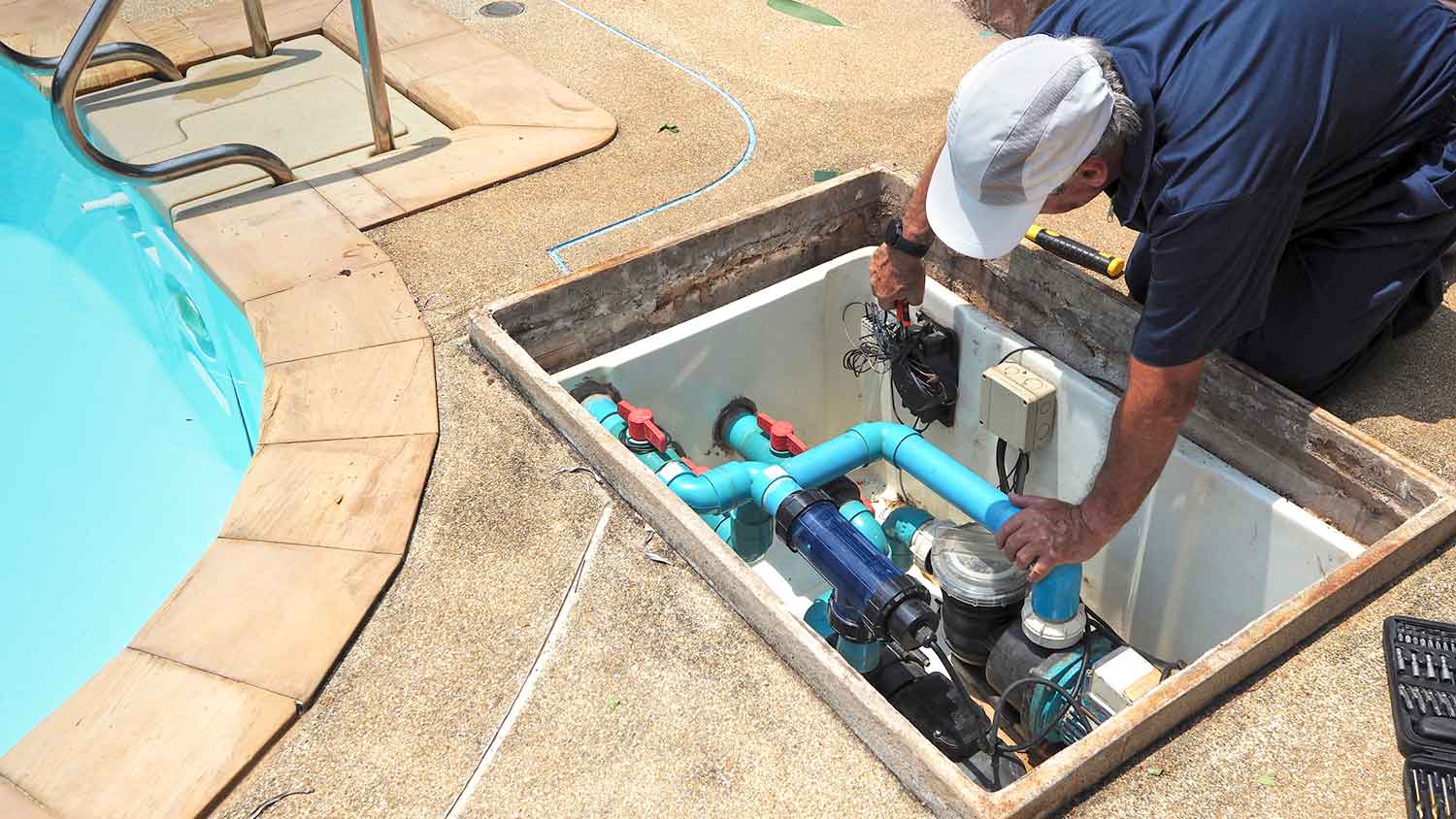
Discover how much installing a steam room costs, including average prices, key cost factors, and tips to save on your steam room installation.
Banish a billion unwanted spa visitors in a blink


You aren’t the only one who likes your hot and steamy spa—bacteria do, too. And when they move in, you’re at risk of infections and illness, including skin and respiratory problems ranging from mild and itchy to downright dangerous. Here’s how to get rid of hot tub bacteria easily and permanently.

Bacteria tops the list of hot tub health risks, so keep yourself safe by monitoring the status of your hot tub. If the water looks cloudy or smells sour, or if the interior walls of the hot tub itself feel slimy, you may be sliding into a bacteria party. You can usually see, smell, and feel signs of the presence of bacteria before it gets out of hand, so act as soon as possible.

Did you know you should rinse your hot tub filter weekly, soak it overnight in filter cleaner monthly, and replace it at least once a year? That might sound high-maintenance, but it will keep your spa cleaner, fresher, and safer. Cleaning your filter is one of the top tips for how to keep a hot tub clean. Clean filters can remove some bacteria from the water, but a dirty filter can contribute to bacteria growth by acting as a breeding ground.
Bacteria love stagnant and still water, including spa water that sits for too long in hot tub plumbing lines. Prevent bacteria buildup by running your hot tub pump 24 hours a day or on a schedule to keep water moving throughout the lines and the main reservoir. Your hot tub circulation pump should come with operating directions for best results, or talk with a local hot tub professional near you for advice. These professionals can help you get your hot tub free of bacteria and in working order.
Chlorine and bromine are your best weapons against bacteria. These chemicals kill bacteria and other biological growth and sanitize the entire tub. Adding the correct hot tub chemicals, regularly testing the levels, and adjusting them as needed will keep your hot tub water clear and free of harmful bacteria.
Chlorine can’t effectively disinfect the hot tub water when it reacts with materials like soap and body oils. After a while, it can begin to smell bad and irritate your eyes and nose. Instead, you want your chlorine to be “free chlorine” that isn’t corrupted and offers the most disinfecting power.
Shock treatments raise the chlorine level to 10 times the recommended range before letting it drop back to normal and will eliminate tainted chlorine and replace it with free chlorine. They’ll also kill the bacteria in the water.

It’s gross but true—bacteria in your hot tub will eat organic materials like sweat and dead skin cells and personal care materials, including lotions and hair products that rinse off your body and into the water. The best way to prevent this feeding frenzy is to shower before entering your spa or Jacuzzi®. Rinsing off beforehand will wash bacteria, lotions, dead skin cells, and other materials off of your body so you don’t bring them into the hot tub with you.
If your hot tub is outdoors, it’s likely to accumulate leaves, insects, and other organic matter and debris from the environment. These floating items can clog filters and jets, break down into gritty particles, make hot tub chemicals less effective, encourage slime and algae growth, and feed bacteria. Use a skimmer or net to remove debris whenever you see it, and empty your filter regularly.
Water chemistry is key to keeping bacteria at bay. Maintaining the hot tub pH between 7.2 and 7.8 is ideal. It’s smart to test the water at least once a week to monitor levels. You can add baking soda to increase the pH level or purchase a pH decreaser if the levels are too high, but only use products compatible with your hot tub make and model.

Hot tub covers keep heat and evaporation in and leaves and debris out. This keeps your spa cleaner, saves electricity, lowers overall hot tub costs, and prevents water loss. A hot tub cover can also help prevent bacteria from building up. Regularly clean your hot tub cover with a diluted bleach solution. If you notice mold or mildew growing, it’s time for a new cover or a deep cleaning.
No matter how well you care for your hot tub, the water will get dirty. Drain your hot tub every three to four months, but you may need to do it sooner, depending on how often and how many people use it. Drain and refill your hot tub more often if:
You use the hot tub daily
You don’t rinse off beforehand
Visitors regularly use the hot tub
You can learn how to drain a hot tub yourself or arrange scheduled visits with a hot tub maintenance company.
Bacteria thrive in dirty or untreated spa water, but they also live and grow on solid hot tub surfaces, including the cover, sides, and exterior of your hot tub. You can transfer bacteria from the water to other surfaces and back again, and bacteria can build up all over your hot tub. Keeping the tub clean and disinfected inside and out is the best way to keep bacteria at bay.
The best way to get rid of hot tub bacteria is to prevent it from getting a foothold in the first place by performing routine maintenance or hiring a pool service company to do it for you. Regular maintenance to prevent spa bacteria includes routine cleaning, removing organic debris, replacing old water, changing filters, testing and balancing chemicals, and monitoring the water for the presence of bacteria.
The average hot tub maintenance cost is between $240 and $900 per year, with most people paying around $570.
There are thousands of species of bacteria on earth, and most are harmless—some are even helpful. However, some harmful pathogens can multiply in dirty hot tub water, including:
E. coli
Staphylococcus aureus (Staph)
Legionella (the cause of Legionnaires’ disease, a type of pneumonia)
Pseudomonas aeruginosa (the cause of hot tub rash, itchy bumps that most often occur in areas covered by swimwear)
While not all types of hot tub bacteria will cause illness or infection, they can still make the water cloudy or smelly and the hot tub surfaces feel slimy and dirty. Any change in your spa water can indicate the growth of bacteria, but you often don’t see or smell changes until bacteria have multiplied out of control. It’s best to stay on top of hot tub maintenance with cleaning, sanitizing, and chemical routines that prevent bacteria growth in the first place.
From average costs to expert advice, get all the answers you need to get your job done.

Discover how much installing a steam room costs, including average prices, key cost factors, and tips to save on your steam room installation.

Discover how much a saltwater hot tub costs on average, including installation and ongoing expenses, plus tips to save money and compare DIY vs. pro options.

Discover the average hot tub maintenance cost, what impacts pricing, and how to save money. Get expert tips to keep your hot tub running smoothly all year.

Do your pool jets have low pressure? Find out the common causes of low pressure in your pool jets, along with what you can do to fix it.

Find out the average pool pump repair cost, key price factors, and ways to save. Get expert tips to budget for your pool pump repair.

A warm soak can renew your spirits, but your hot tub occasionally needs a refresh. This guide will help you decide whether to replace or refurbish your hot tub.